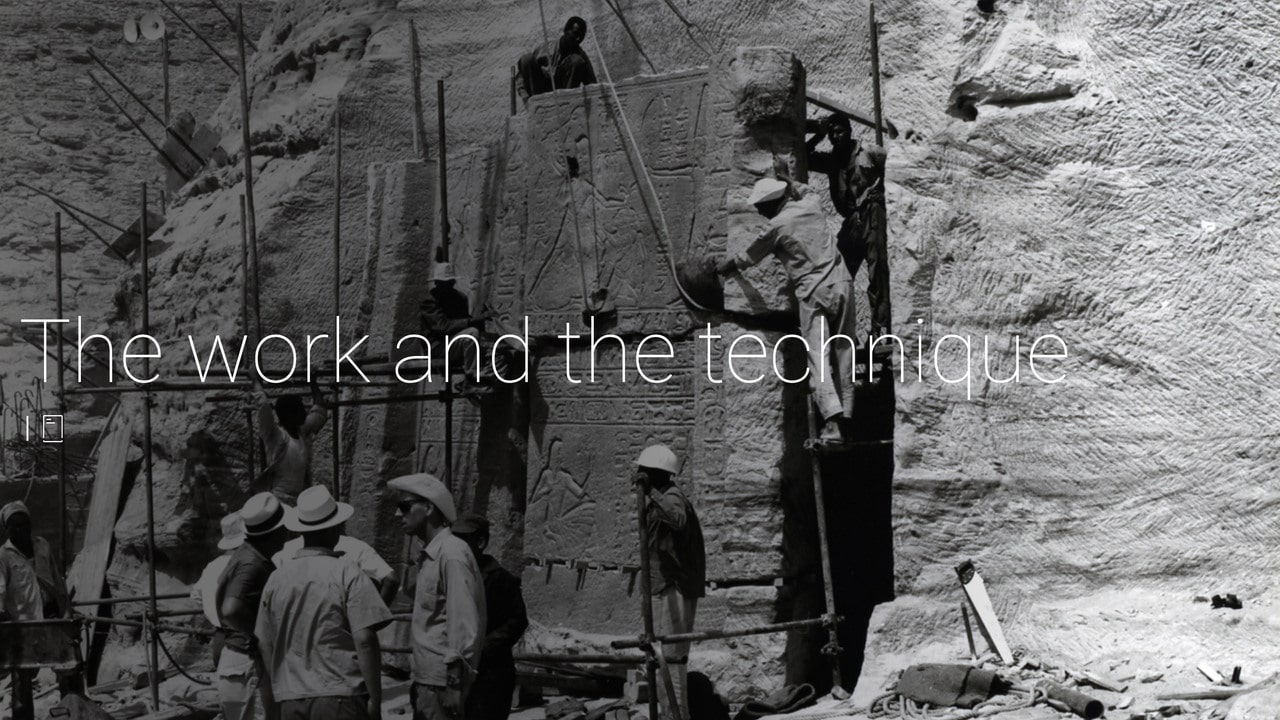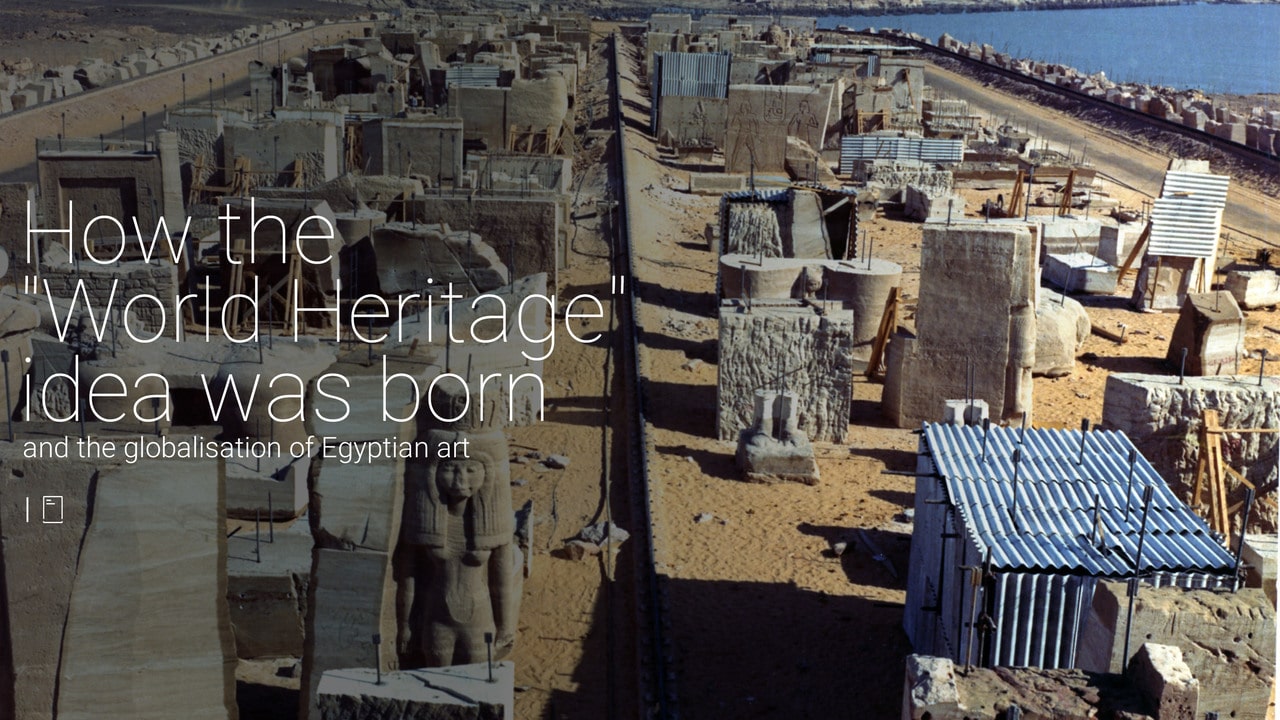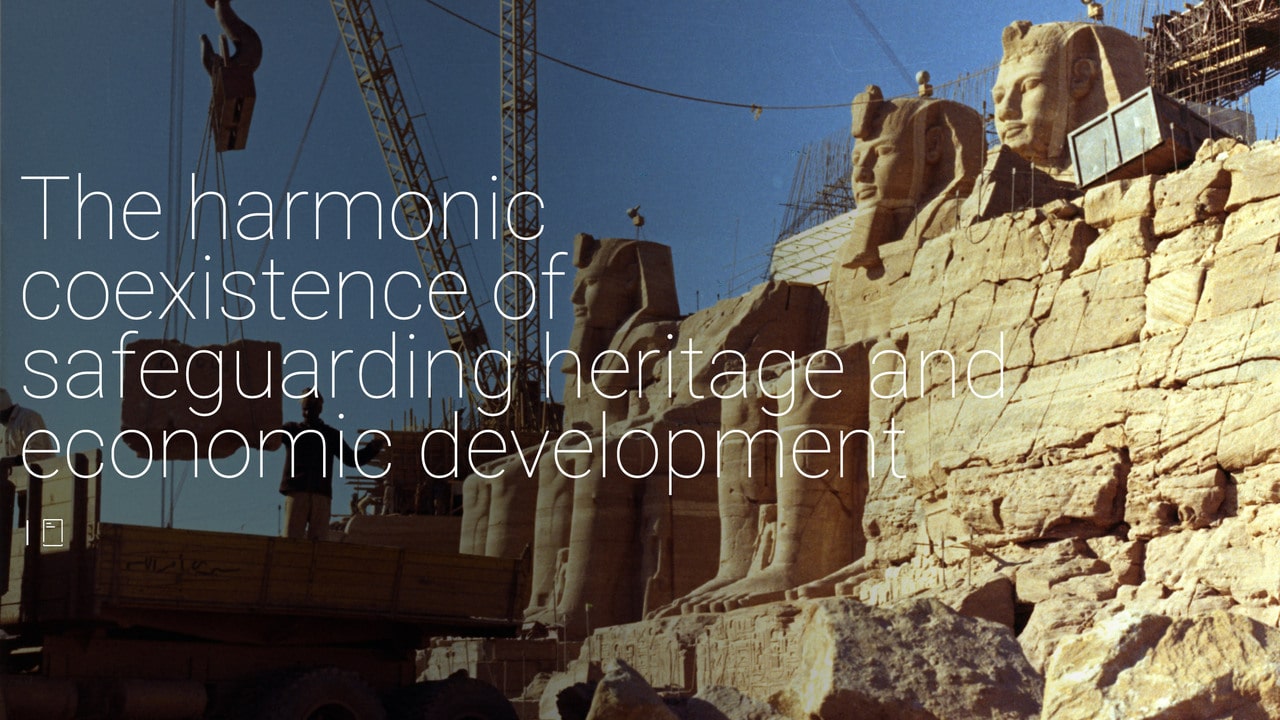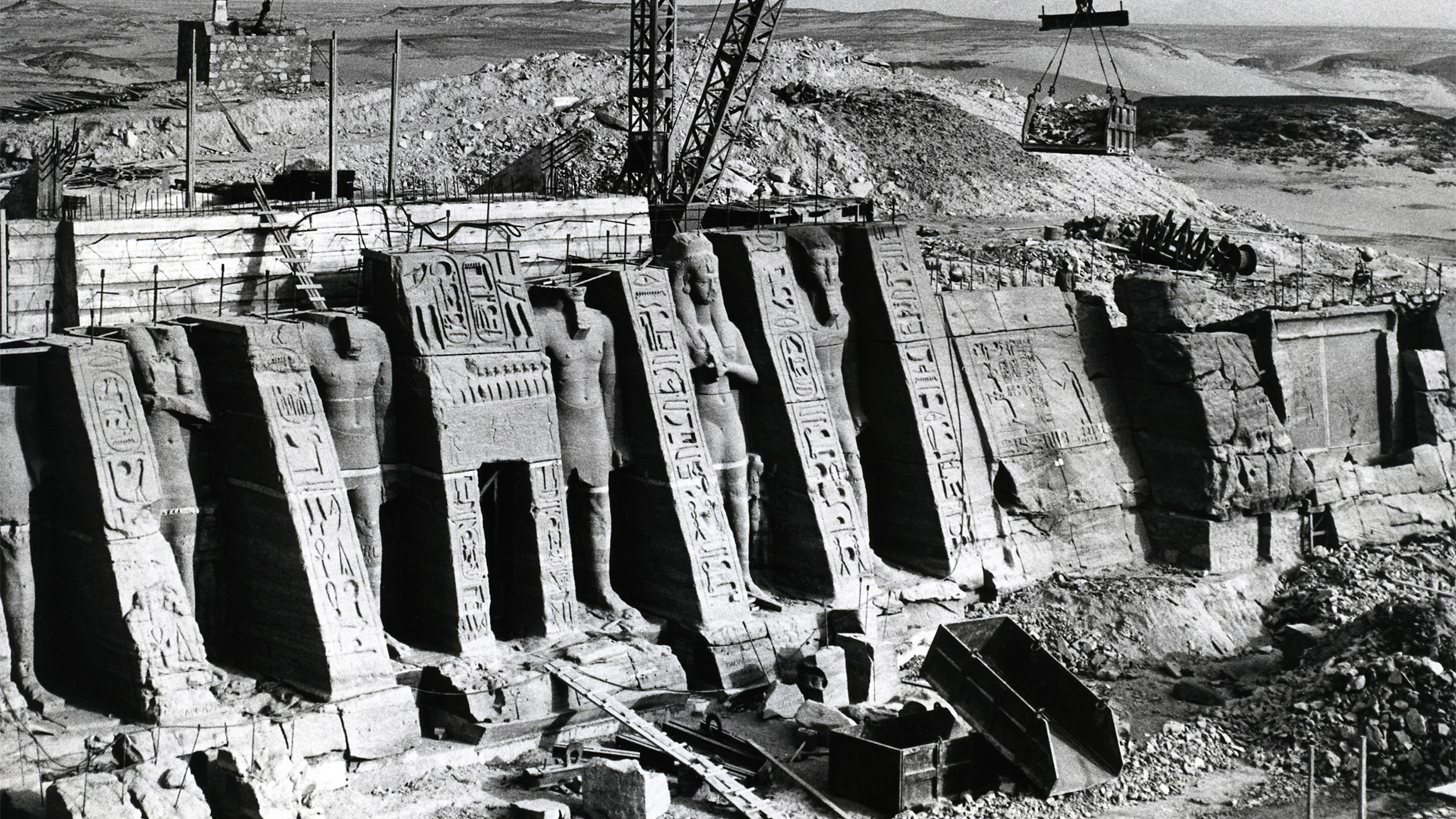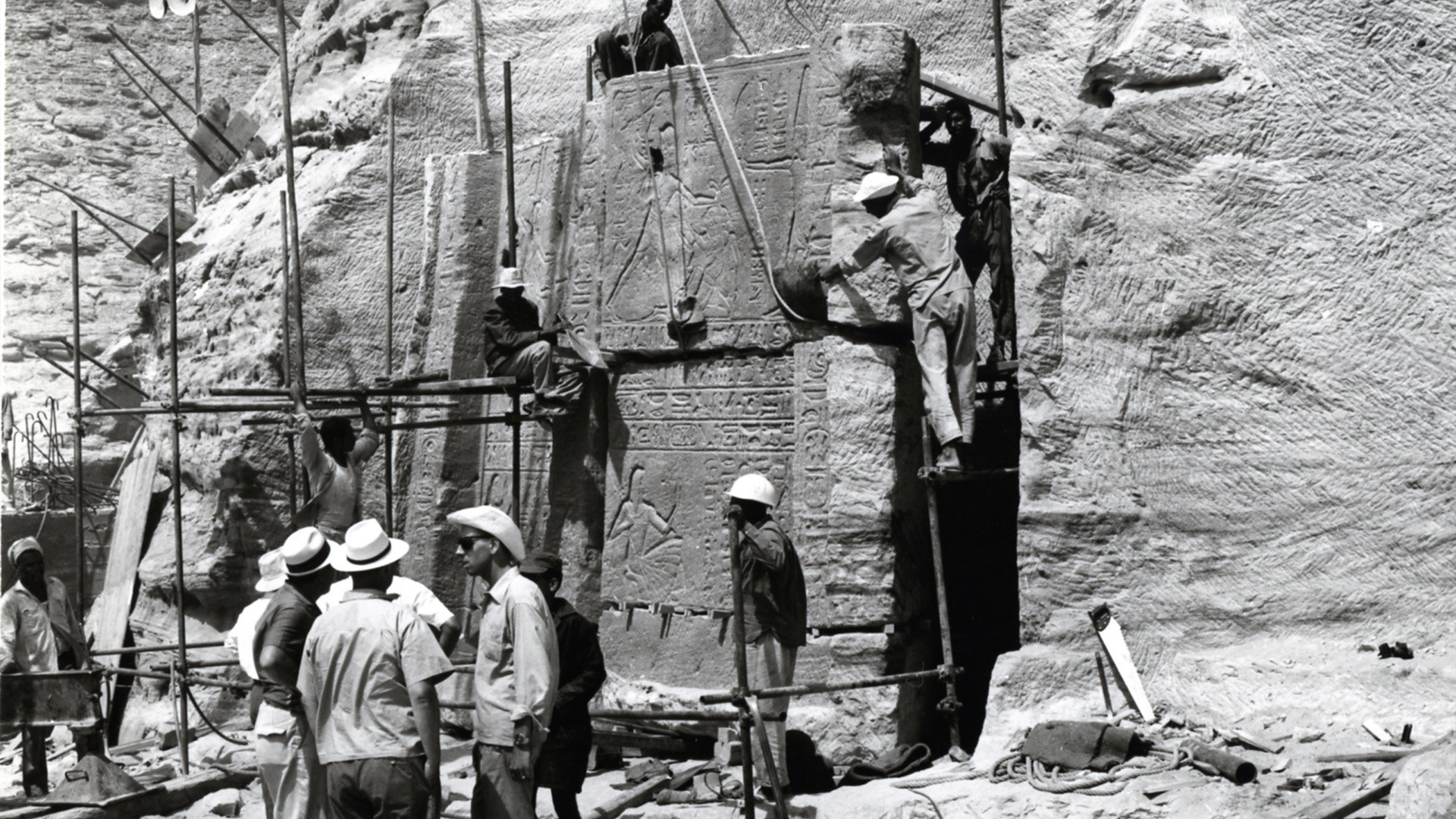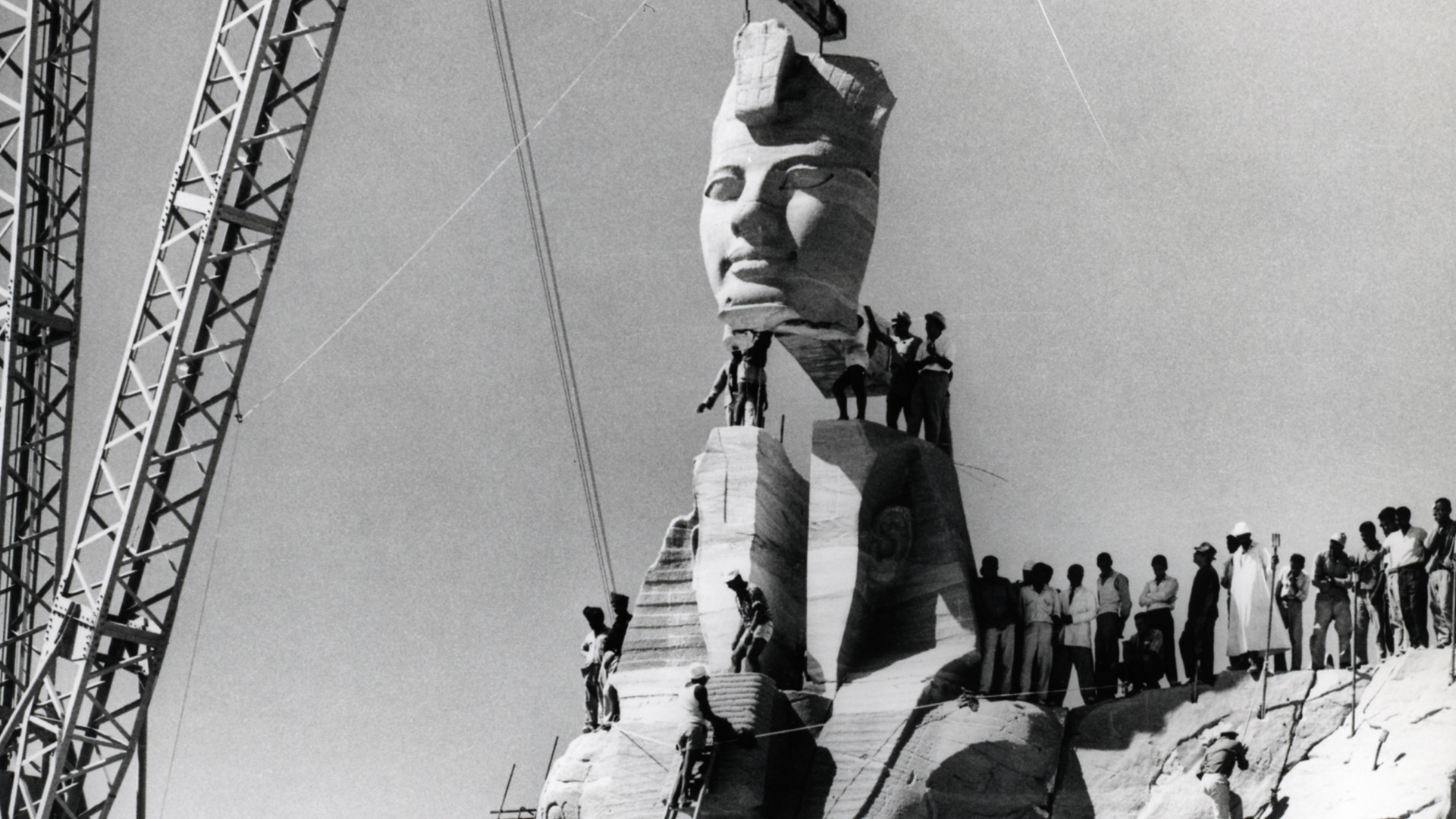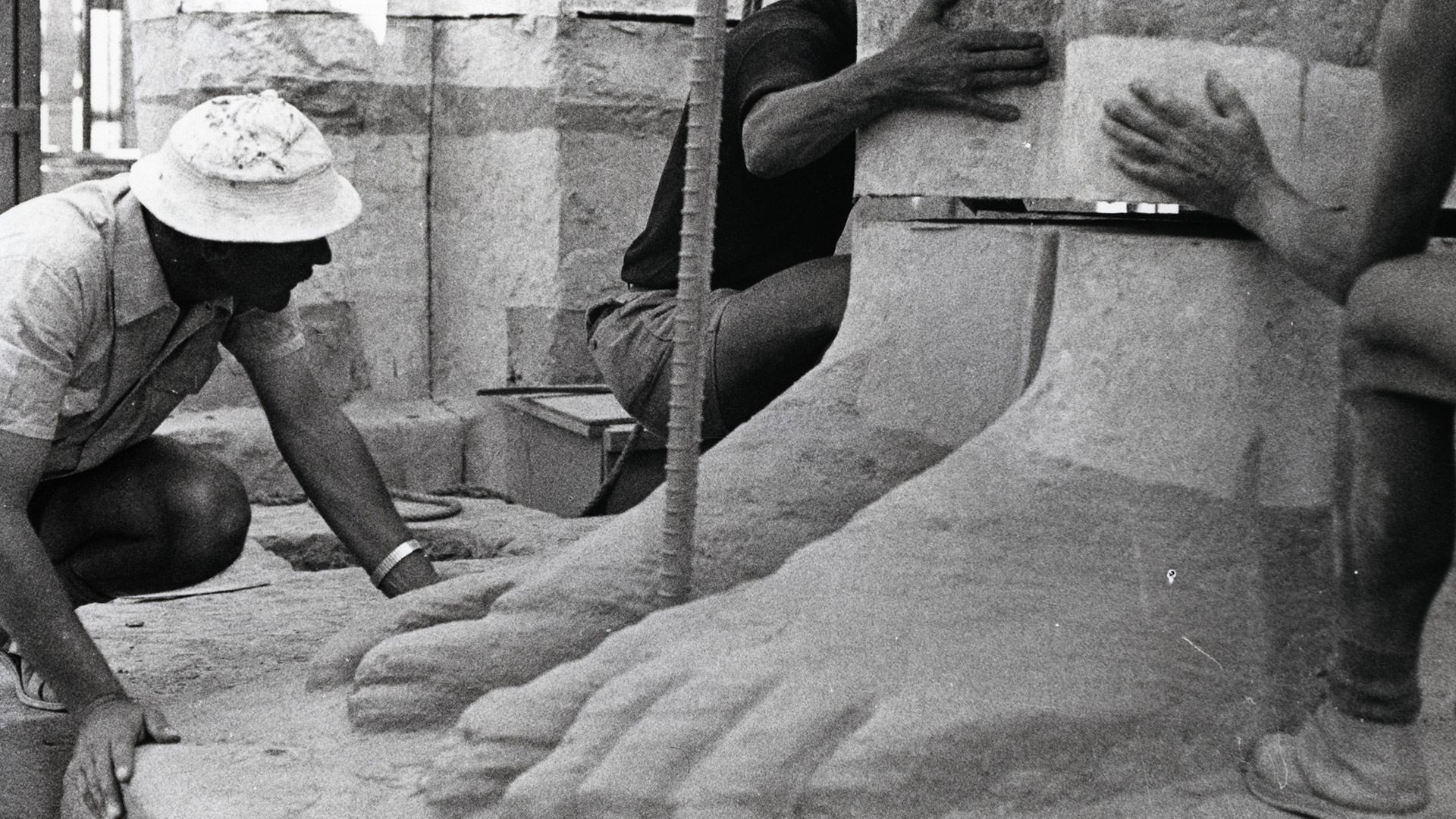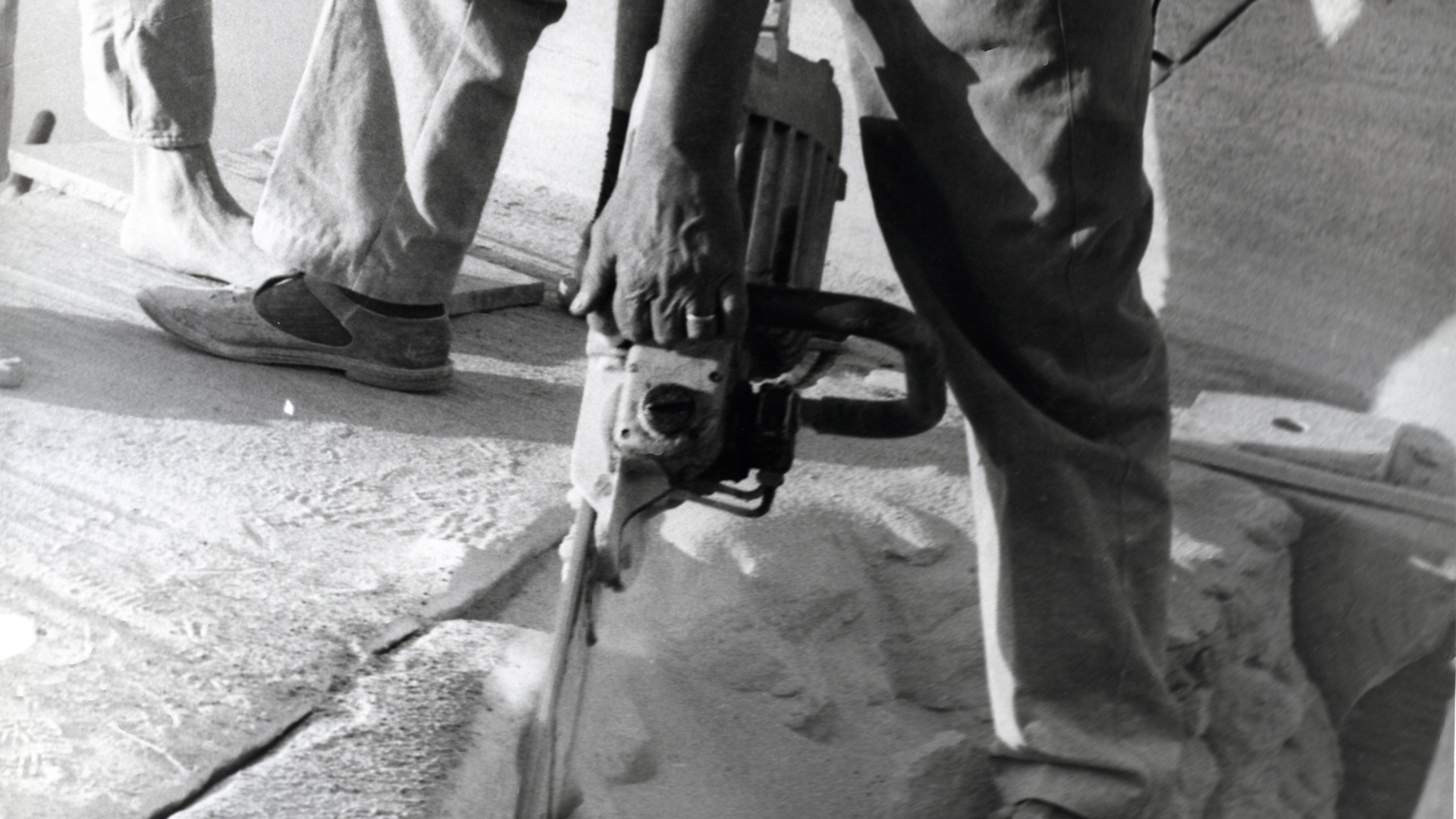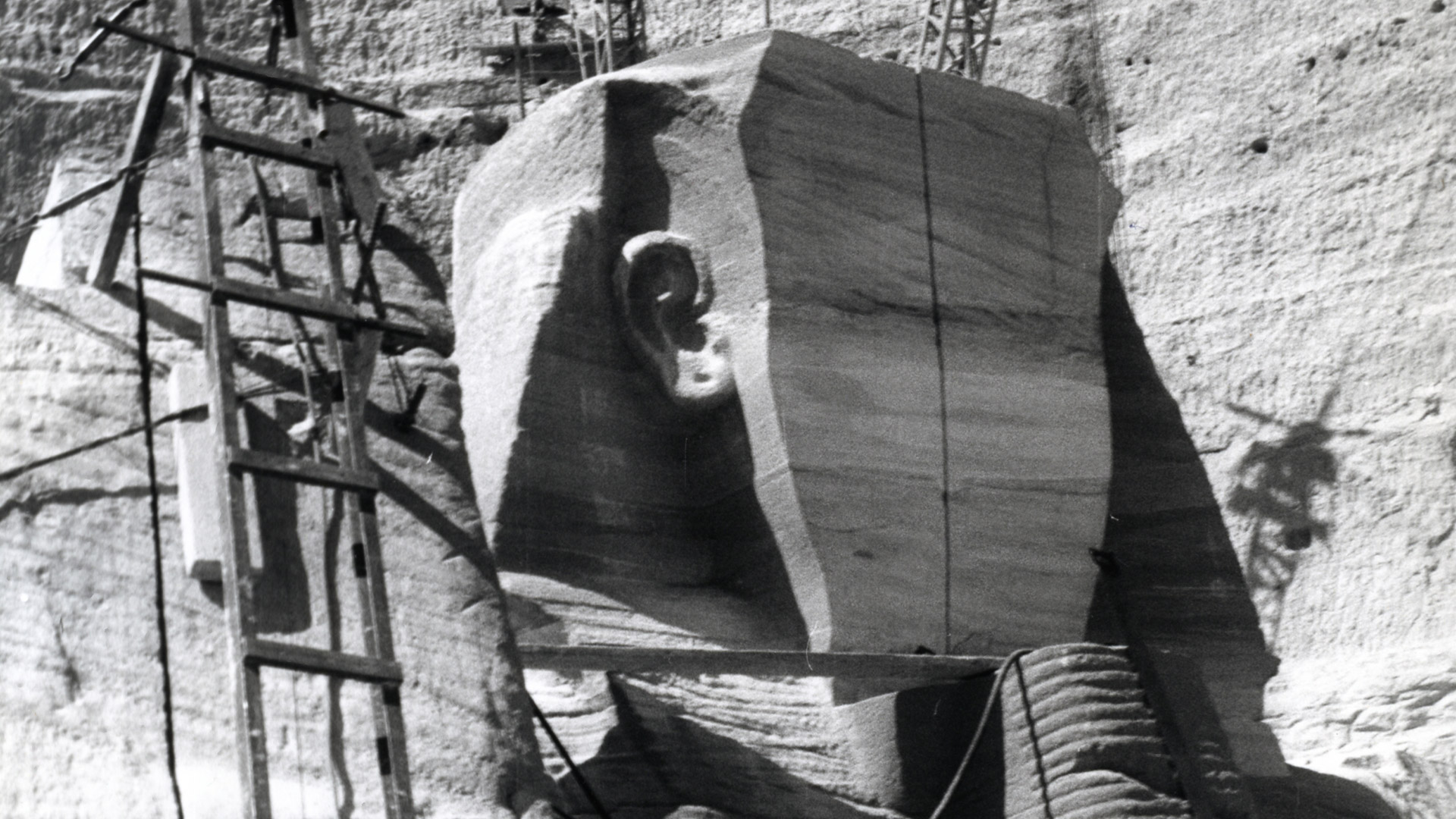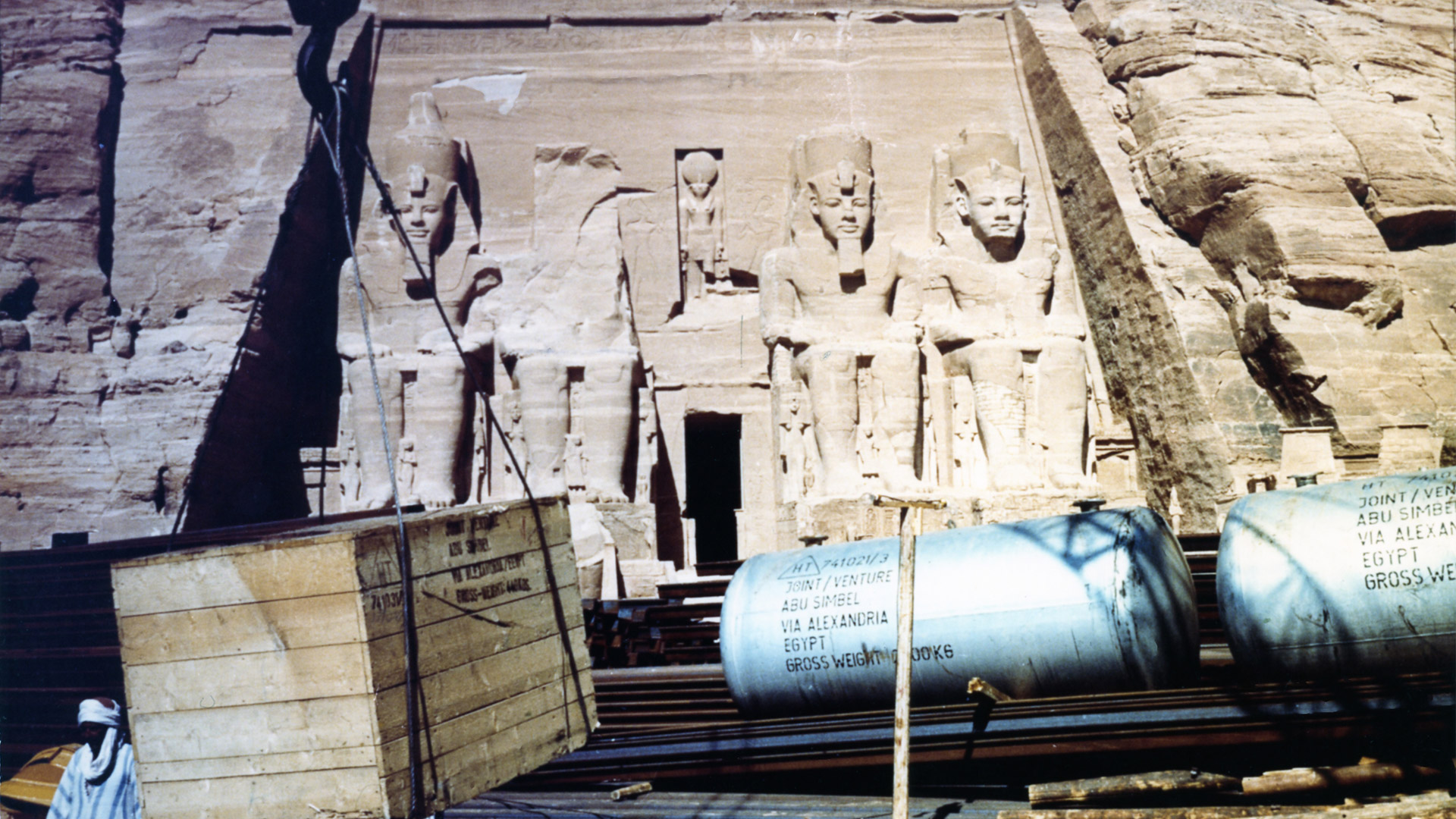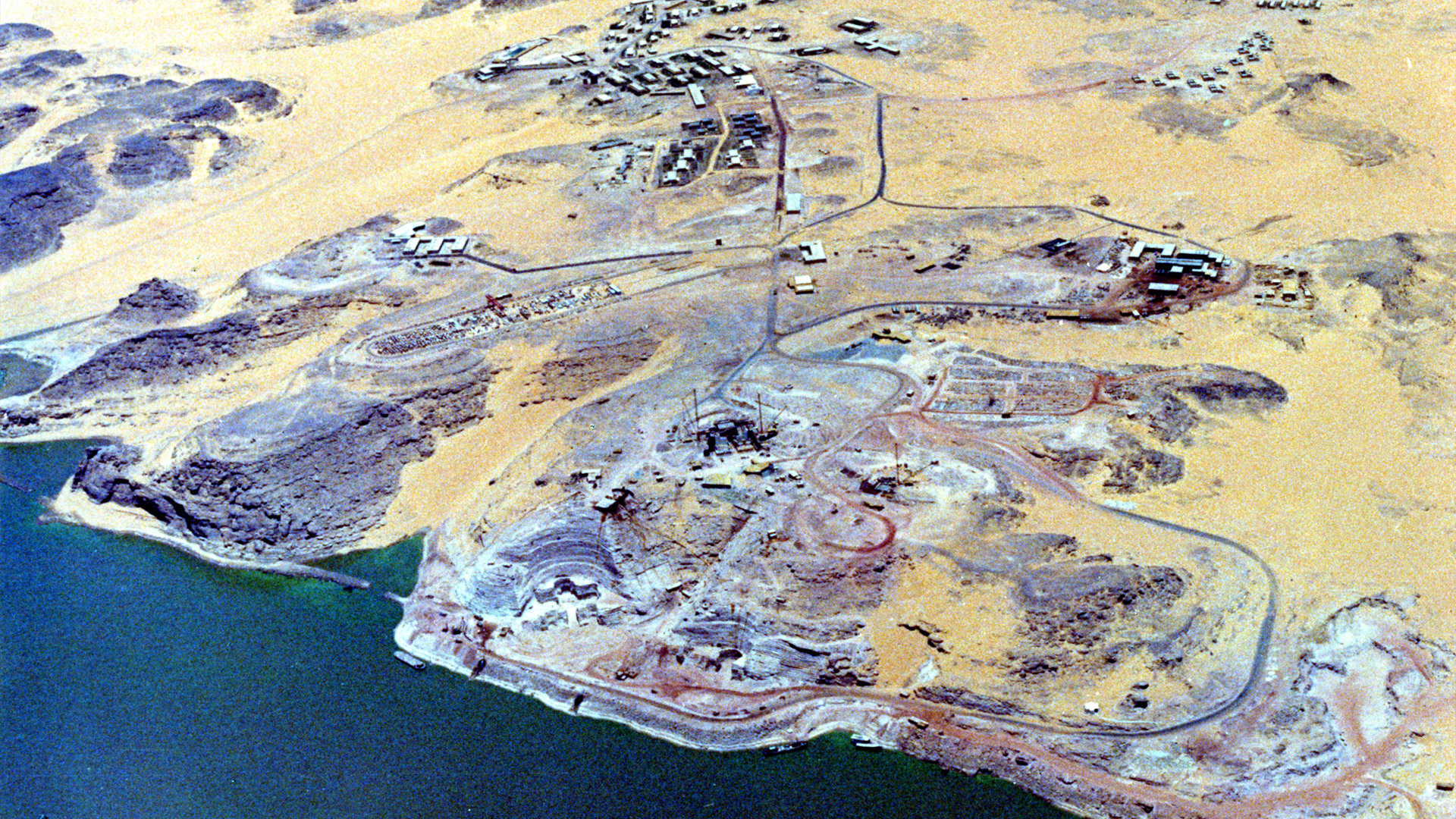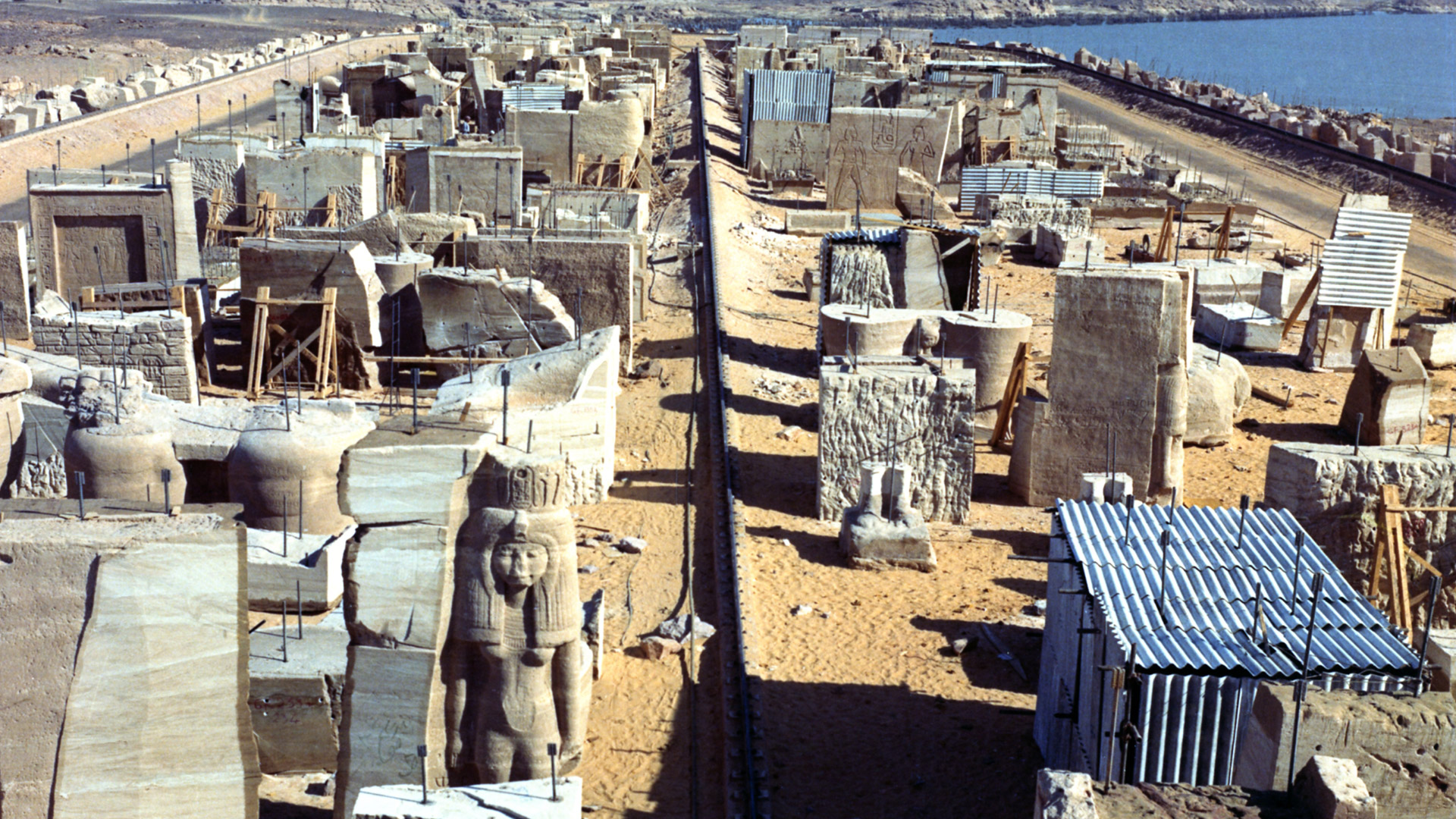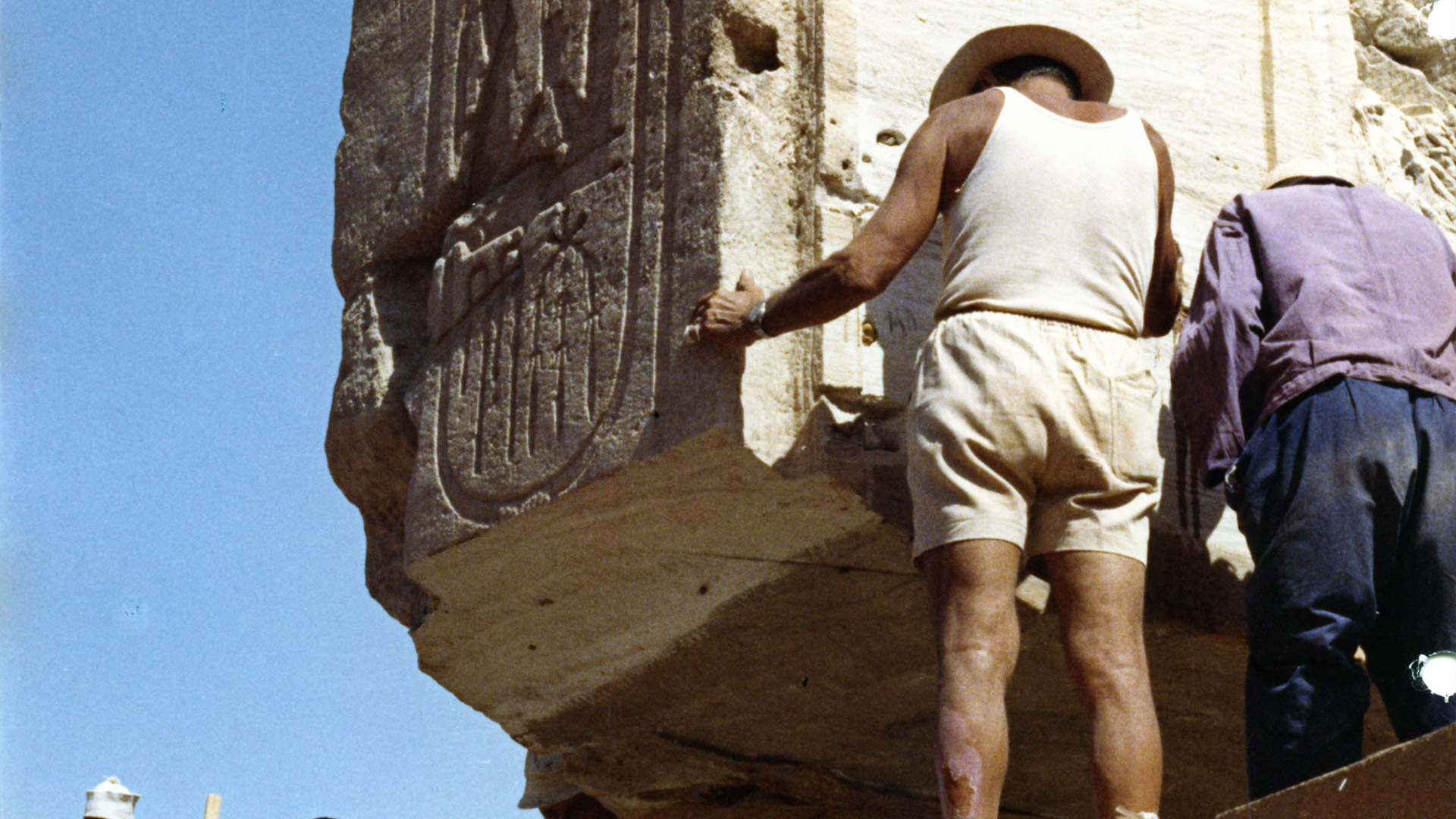The challenge to save 3,000 years of history
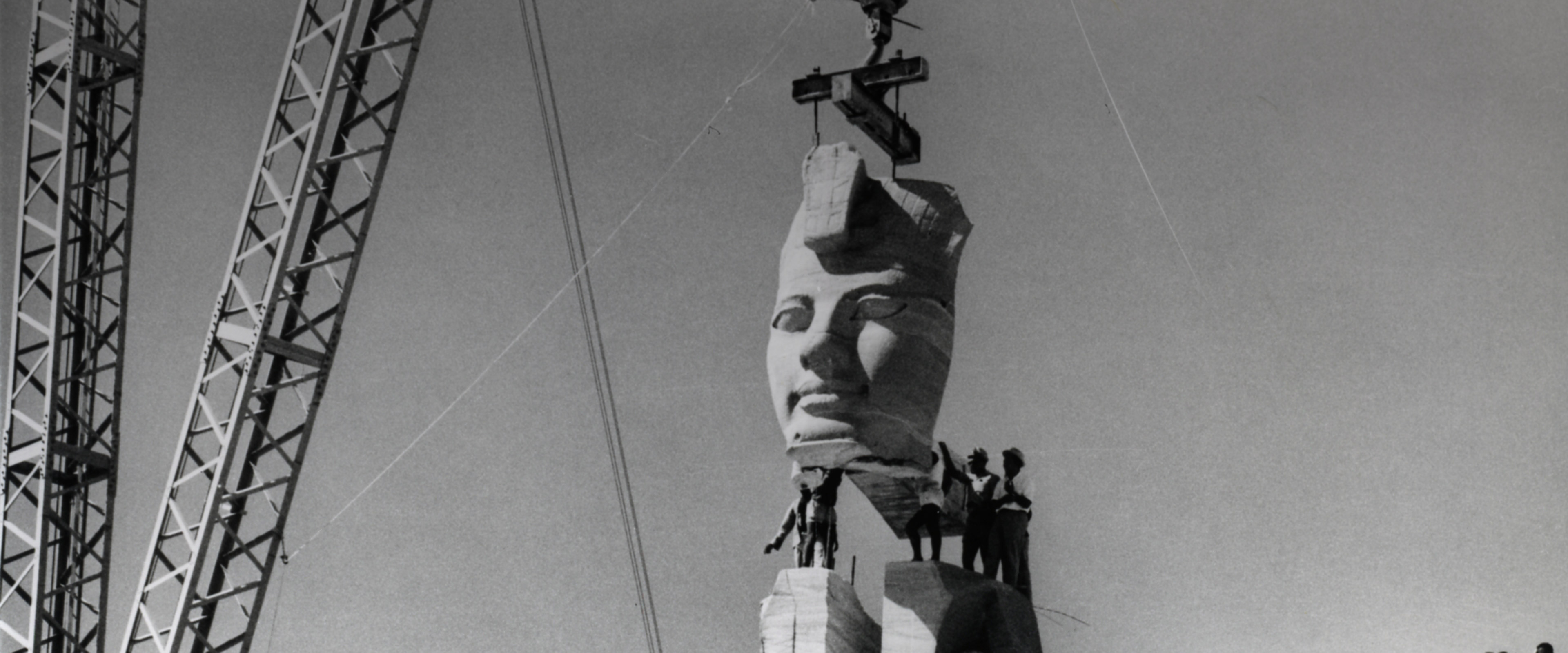
THE SALVAGE OF THE TEMPLES OF ABU SIMBEL, EGYPT
A temple over 3,000 years old cut by hand. It could appear as pure folly, but this is the officiating element of a wedding between two operations, a cultural and engineering one, and among the most advanced worldwide.
Nasser, the Egyptian leader asked for the construction of a dam on the Nile that would have allowed to cultivate land of over 10,000 km2 in the desert. This operation would have submerged the Temples of Abu Simbel, among the largest and most magnificent ancient monuments built by Ramses II in the XIII century B.C.
A huge international mobilization was put in place to save the site. This intervention was the first non-European campaign in this sense.
It was moved approximately 280 metres from its original location and raised 65 metres: in fact, it was placed on an artificial hill for which 380,000 m3 of rock and sand were required and 11,000 m2 of sheet steel plate piles.
Over 50 countries worldwide participated in this delicate operation, which saw the use of manual jackhammers (explosives would have endangered the temple) and the need to cut the inside of the temple and the Abu Simbel façade with handsaws.
A miracle almost happened: a temple that was thousands of years' old was moved while keeping its original orientation, which allowed the structure to keep its axis aligned with the planets and the sun, exactly as it was originally built.
The Assuan Dam, from that moment onwards, generates approximately half of the energy needed by Egypt. In the 70's, it allowed every Egyptian to use electricity.

THE WORK AND THE TECHNIQUE
MEN WORKFORCE
WORK HOURS
METERS HEIGHT OF THE FACADE OF THE TEMPLES
METERS HEIGHT OF THE COLOSSUS
METERS WIDTH OF THE TEMPLES
1,070 for the temples (235 for the Small Temple, 835 for the Great Temple);
7,764 for the hill
320.000 tonnes (55,000 t for the Small Temple, 265,000 t for the Great Temple)
Length: 370 metres
Height: 25 metres
Materials: 380,000 cubic metres of rock (75%) and sand (25%); 11,000 m2 of sheet steel plate piles
Ministry of Culture and National Guidance, Cairo, Egypt
Joint venture Abu Simbel Hochtief, (lead contractor), Sentab-Skanka, Atlas; Impregilo, Grands Travaux de Marseille.
In 1963, works were awarded to an international consortium of companies of which Impregilo then merged into the Group now Webuild.
During the first phase (1964-1965), the temples were protected from the rising waters of the Nile. A cofferdam was built, which measured 370 m in length and 25 metres in height. The external temple walls were covered by a jet of fine sand, while the internal roofing was reinforced with steel scaffolding.
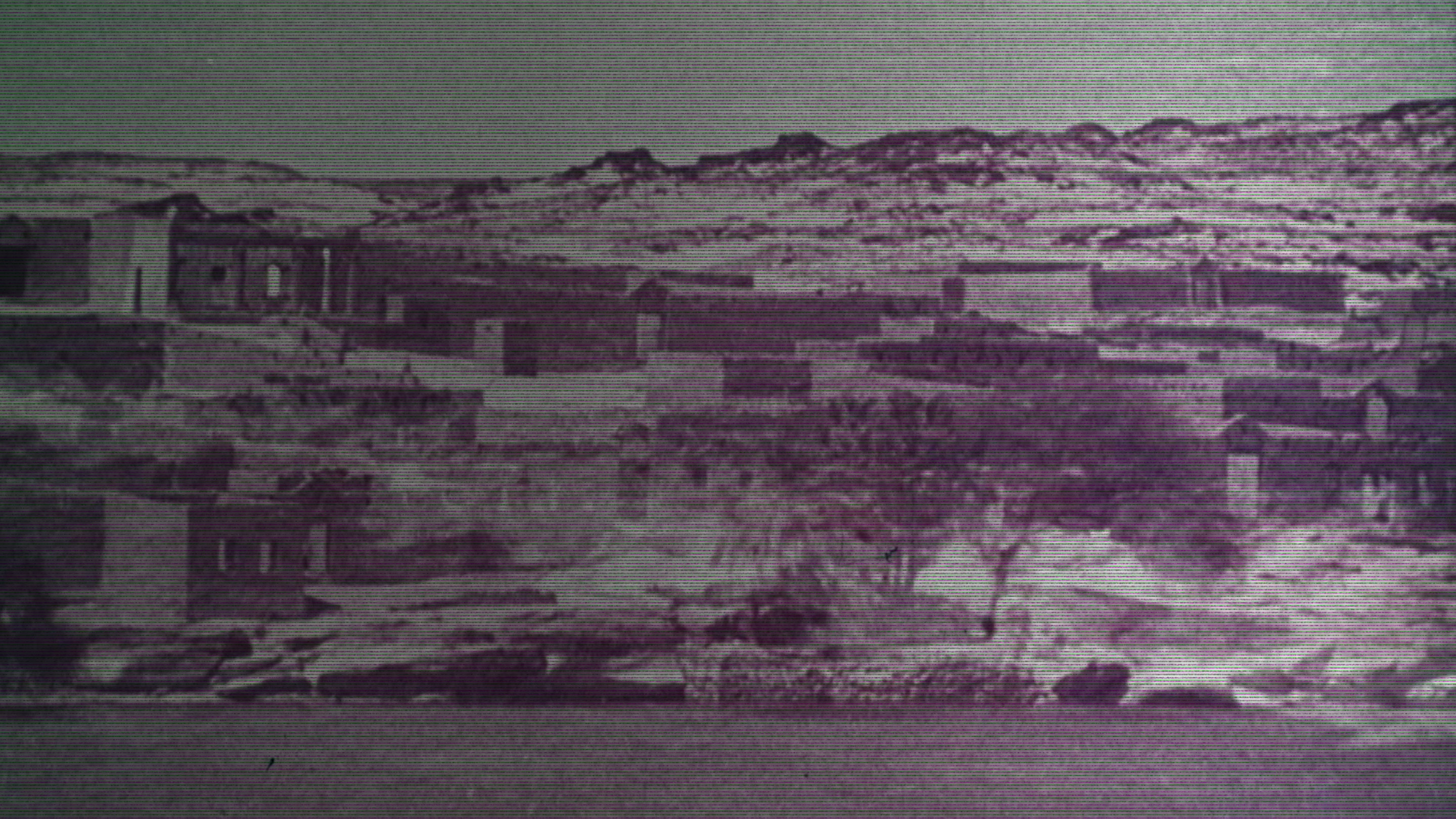
Abu Simbel
The Salvage of the Temples
Herbert M. Franck, 1969
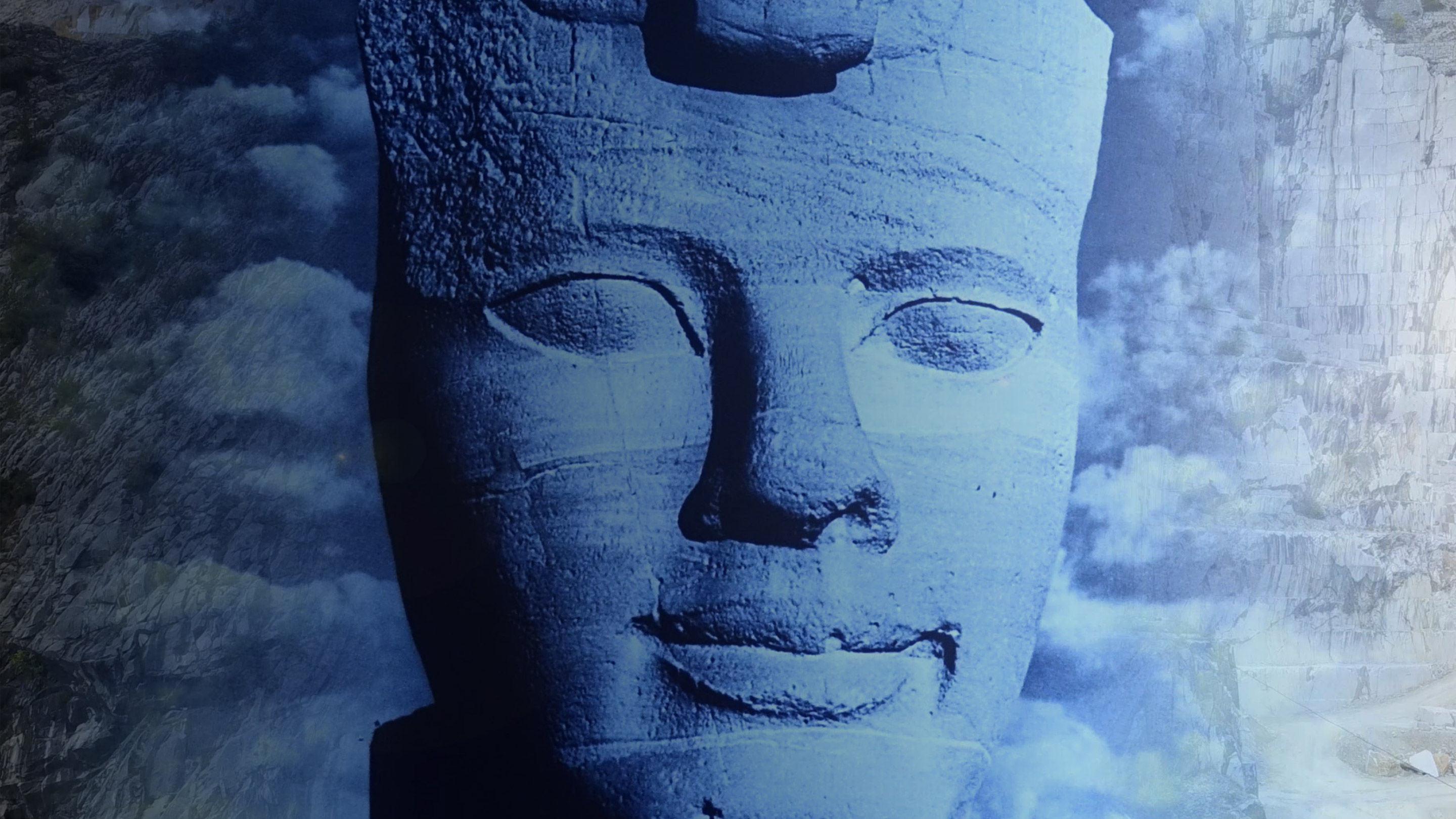
The hands of Abu Simbel
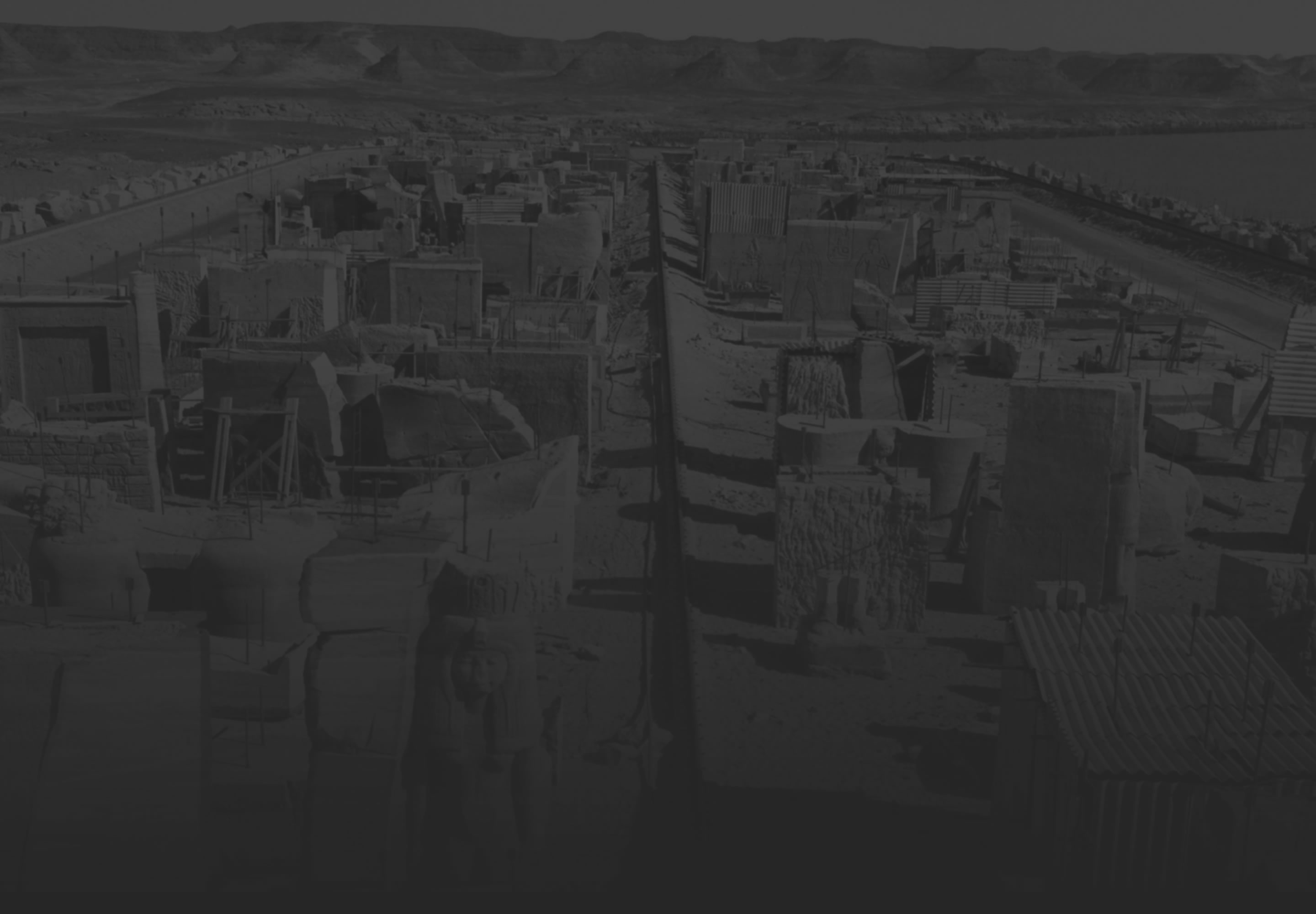
CULTURAL INSIGHTS

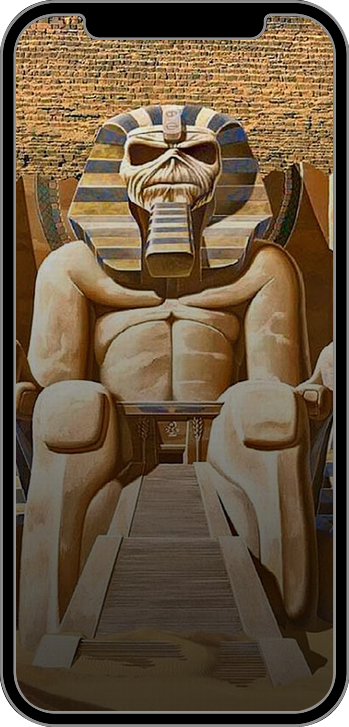
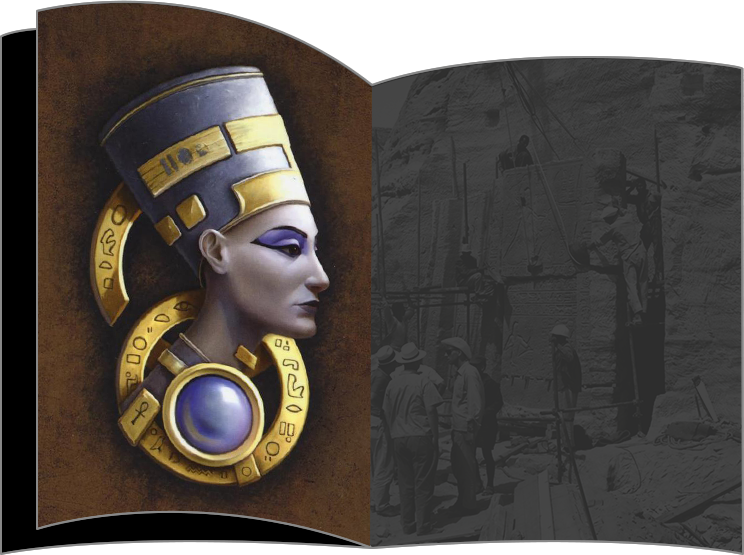
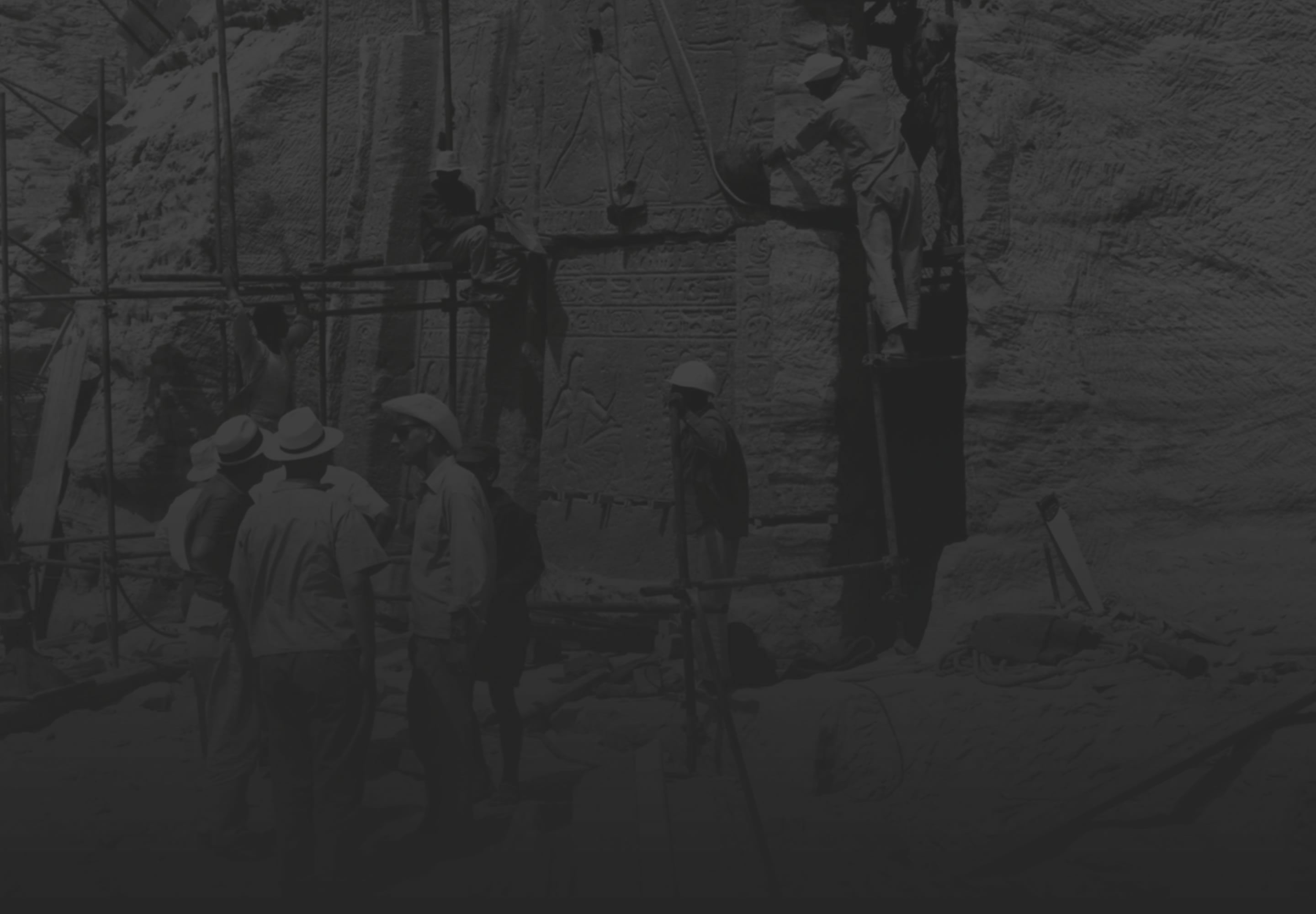
How the "World Heritage" idea was born and the globalisation of Egyptian art
The Abu Simbel intervention was the first global initiative of UNESCO to safeguard non-European archaeological heritage.
It strengthened its institutional role within the system of international relations during the Cold War. This project - thanks to the extraordinary visibility provided by the press - offered a final awareness of the existence of a World Heritage, whose safeguarding responsibility went beyond national borders.
At the same time, some of the finds discovered during excavation campaigns were given to various museums of the partnering companies' nations, therefore making Egyptian art renowned worldwide.
The local government, as a sign of gratitude for the help that was received donated the Temple of Dedod to Spain (Parco del Cuartel de la Montaña, Madrid), the Dendur one to the US (Metropolitan Museum, New York), the Taffa one to the Netherlands (Rijksmuseum van Oudheden, Leida), the door of the Kalabsha Temple to Germany (Ägyptisches Museum und Papyrussammlung, Berlino) and the Temple of Ellesyia to Italy (Museo Egizio Torino).
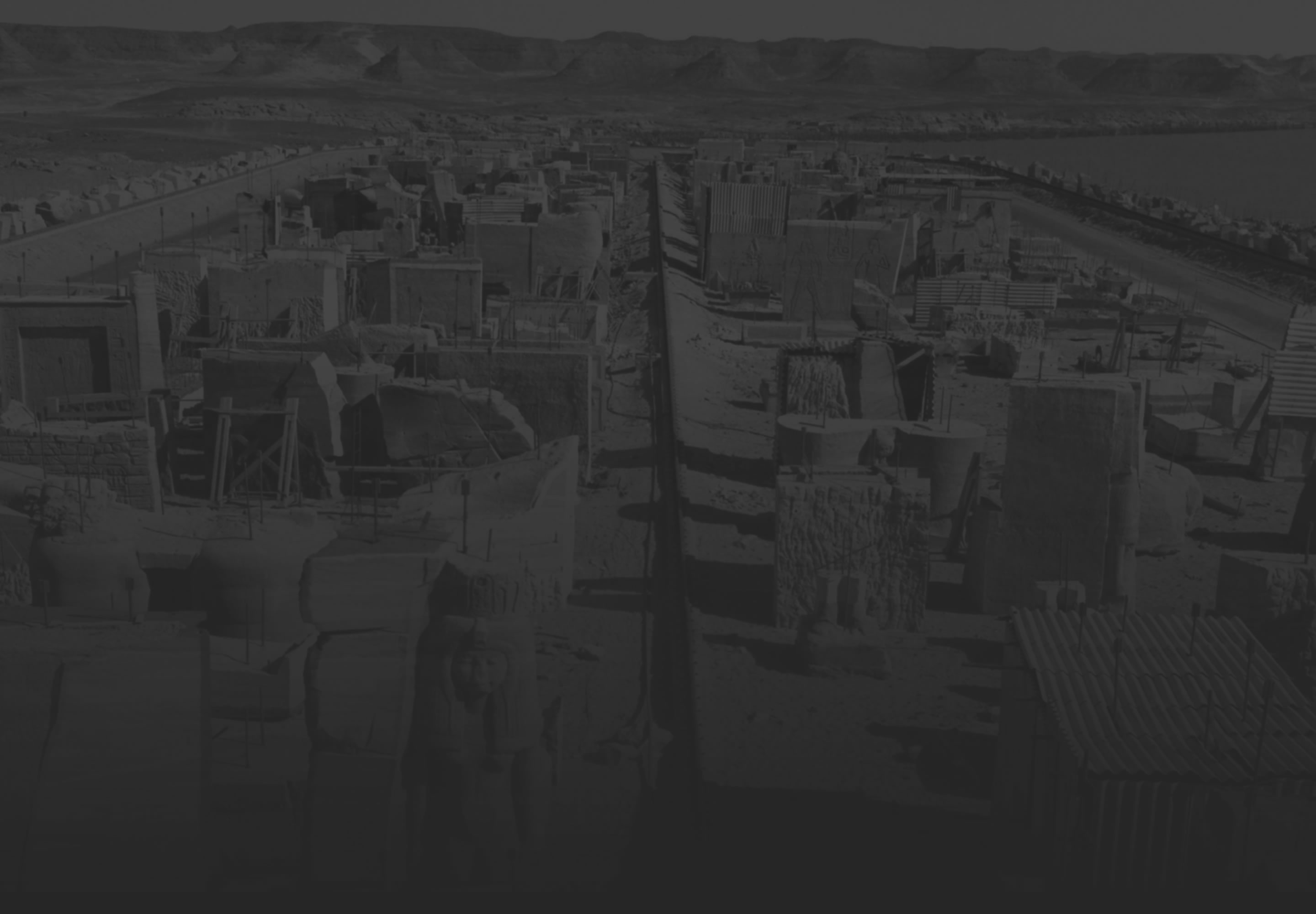
The harmonic coexistence of safeguarding heritage and economic development
Moving the Abu Simbel complex demonstrated that it was possible to harmonically let the safeguarding of cultural heritage coexist with economic development and social expansion.
Building the Assuan Dam allowed 10,000 square metres of land, which was previously a desert, to be productive, increasing by a third the usability for agricultural purposes, in a country undergoing a serious food shortage crisis. It also allowed generating over 50% of the electricity needed to modernise Egypt, so that in the 70's the Egyptian population could use electricity for the first time.
At the same time, the fact that this structural move became famous, made Abu Simbel an international tourist site, creating a significant income for the country also launching Egypt as a primary choice for cultural mass tourism, while positively impacting the commercial sector.
km2 of land made productive
of electricity created to modernize the nation
You could also be interested in

The great undertaking
that saved the
Temples of Abu Simbel






